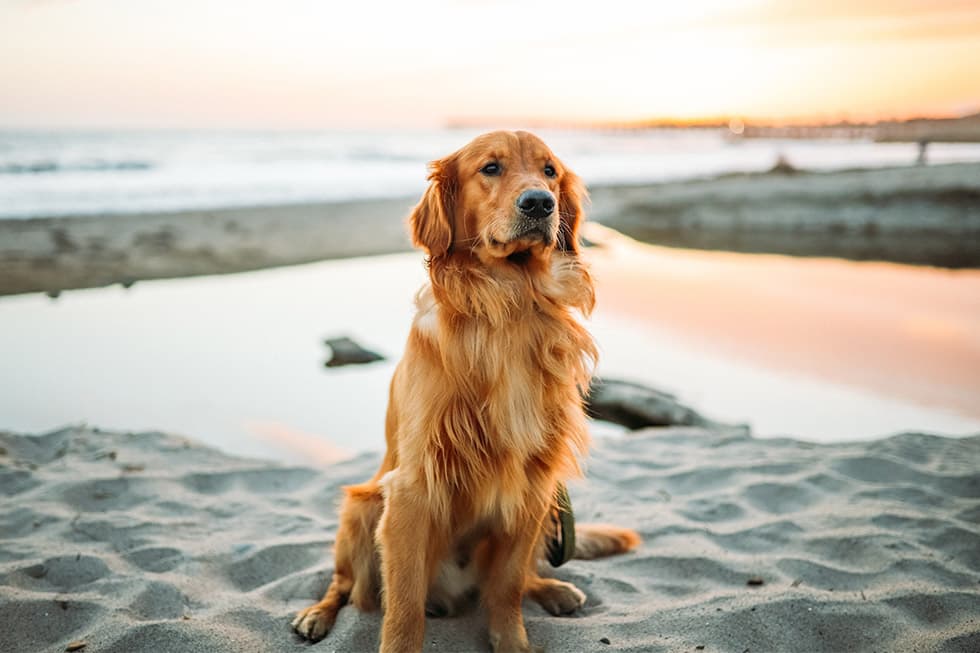Summer Heatstroke in Dogs: A Vet-Cost Wake-Up Call

Summer Heatstroke in Dogs: A Vet-Cost Wake-Up Call
It's a scary thought, but the number of our furry friends suffering from heatstroke during the summer has absolutely exploded. I remember seeing a neighbor's Golden Retriever looking incredibly sluggish after just a short walk last July—it’s a stark reminder of how quickly things can go wrong. With forecasts predicting an even more scorching summer ahead, it's a critical time for a refresher on the very real dangers of pets overheating.
Pet wellness experts are sounding the alarm, and for good reason. Recent veterinary insurance data paints a sobering picture: heatstroke-related claims shot up by a jaw-dropping 46% in just one year, with the peak danger zone falling squarely between November and March. As the mercury rises, countless pets are at risk of this life-threatening condition, and it's something every single one of us needs to take seriously.
“Heatstroke can sneak up on you and have devastating consequences for a pet,” one long-time vet tech shared with me once. It’s not an exaggeration. Keeping your dog cool isn't just a suggestion; it’s a necessity for all breeds, whether you have a fluffy Samoyed or a short-haired Vizsla.
And what about the financial sting? Let's be real, a vet visit is never cheap. Heatstroke treatment can be a massive financial burden, depending on how severe the case is. While the average claim might hover around the $600 mark, some poor pups have required intensive care that sent bills spiraling to an eye-watering $27,181. That’s not a typo.
You see, dogs just can't regulate their body temperature the way we can. They don’t sweat through their skin; they rely on panting, which becomes wildly inefficient in extreme heat. This is especially true for certain breeds. You know those adorable "squishy-faced" dogs? Breeds like French Bulldogs, Boxers, and Pugs are in a group called Brachycephalics, and their unique anatomy makes them suffer terribly in the heat. If one of these guys is part of your family, you have to be ten times more careful when it gets hot outside.
And this should go without saying, but let's shout it from the rooftops: NEVER leave your pet in a car. Not for a minute. Not with the windows cracked. Your car transforms into a convection oven in seconds, even if you’re parked in the shade. It’s simple: if your pet can't come with you into the store, they are infinitely safer left at home with plenty of water and cool shelter.
Simple Tricks to Keep Your Pup Chilled Out
Shifting gears, what can you actually do to keep your four-legged friend comfortable? Here are some fantastic, field-tested ideas:
- Create some "pupsicles." Freeze water—maybe with a few blueberries or a dollop of plain yogurt mixed in—inside old ice cream containers or Tupperware. It's a fantastic boredom-buster and a cooling treat for a hot afternoon.
- Break out the kiddie pool! A cheap clam-shell pool from a hardware store provides hours of splishing and splashing fun.
- Give them access to cool surfaces. If you have tile, stone, or a shaded concrete patio, make sure your pet can lie there to cool their belly.
- Get a summer haircut. For long-haired breeds, a professional trim or clip can make a world of difference in their comfort level.
- Cool the ground. On really blistering days, I like to hose down the dirt and grass under our shadiest tree. It lowers the ambient temperature of their favorite lounging spot.
- Adjust your walk schedule. Exercise should only happen in the cool of the early morning or late evening. Midday walks are a recipe for disaster.
- Do the five-second test. Place the back of your hand on the pavement. If you can't hold it there for five seconds, it's way too hot for your dog's sensitive paw pads.
- "And don't forget to check on their water bowls," a veterinary nurse wisely advises. "Keep them out of the sun. A metal bowl in direct sunlight can get hot enough to burn a tongue." It’s also smart to observe how shade patterns change in your yard throughout the day to ensure your pet always has a cool spot to retreat to.
Red Flags: Spotting Heatstroke Before It's Too Late
Heatstroke is a full-blown medical emergency. If you even suspect your dog is suffering, you need to contact a veterinarian immediately. Here are the symptoms to watch for:
- Frantic, Non-Stop Panting: This isn't your dog's normal happy panting. It's rapid, heavy, and desperate.
- Excessive Drooling: You might notice thick, sticky saliva, far more than usual, as their body struggles to cool down.
- Racing Heart: Their heart rate can become dangerously elevated as their system goes into overdrive.
- Hot to the Touch: Their skin, particularly around the ears and belly, will feel excessively warm or hot.
- Lethargy and Weakness: The dog may seem incredibly tired, weak, or completely unresponsive to your calls.
- Upset Stomach: Gastrointestinal issues like vomiting and diarrhea, which may even contain blood, are serious signs.
- Collapse: In the most severe cases, the dog may collapse, lose consciousness, or even have seizures.
- Loss of Coordination: Look for stumbling, wobbly movements, or a general lack of coordination.
- Dizziness or Confusion: The dog may seem disoriented and confused about their surroundings.
The bottom line? Prevention is so much better than treatment. Making simple changes to your daily routine—like adjusting exercise times, ensuring constant access to shade and fresh water, and never leaving them in a car—can guarantee your best friend doesn't become another sad statistic.
Which Breeds Are in the Hot Seat?
Based on vet-reported data, some breeds are just more susceptible to overheating than others. Keep an extra close eye on these pups during warm weather:
- Bulldog
- Newfoundland
- Collie
- Australian Shepherd
- French Bulldog
- Bernese Mountain Dog
- Kelpie
- Fox Terrier
- Dachshund
- Pug